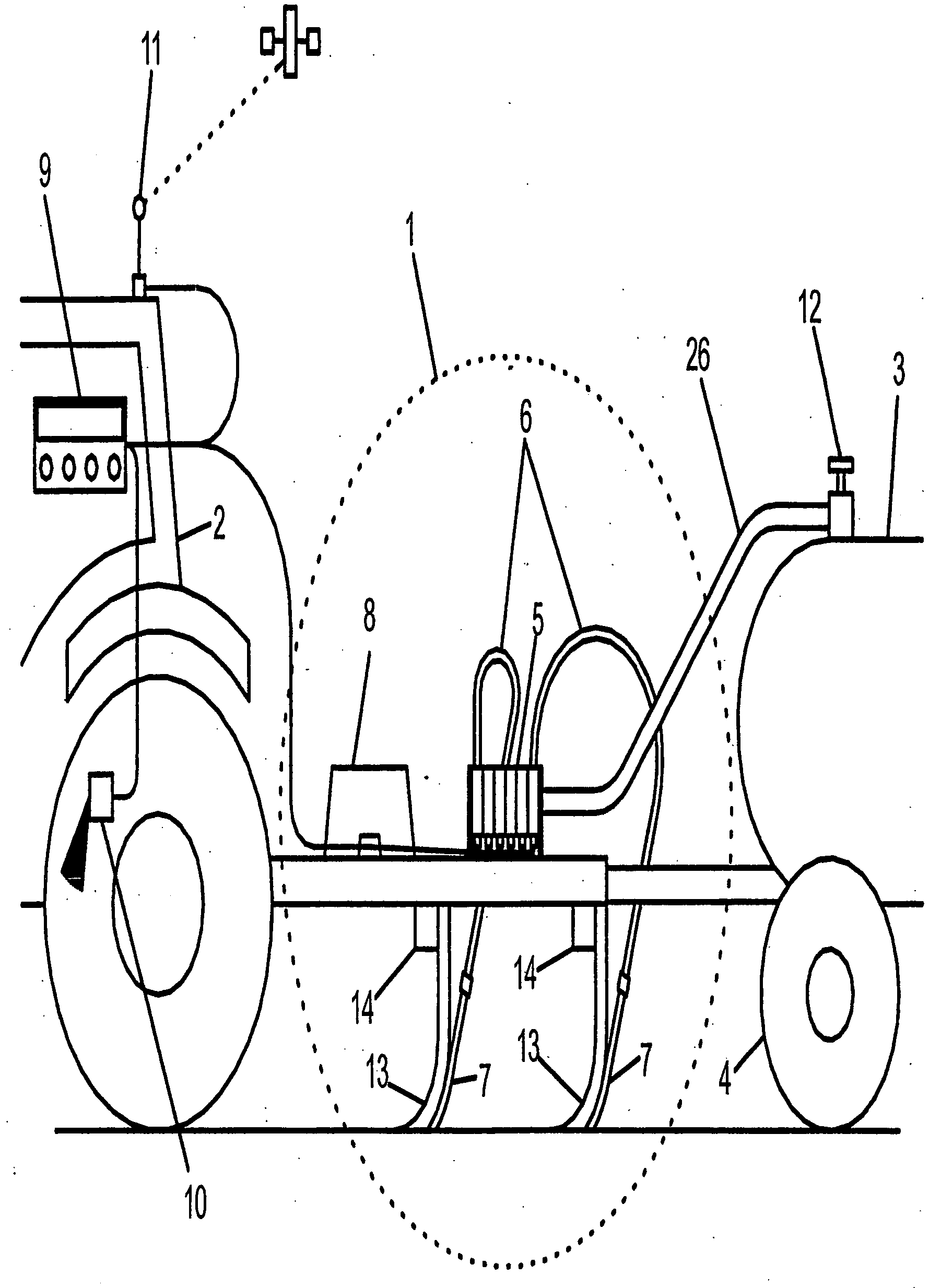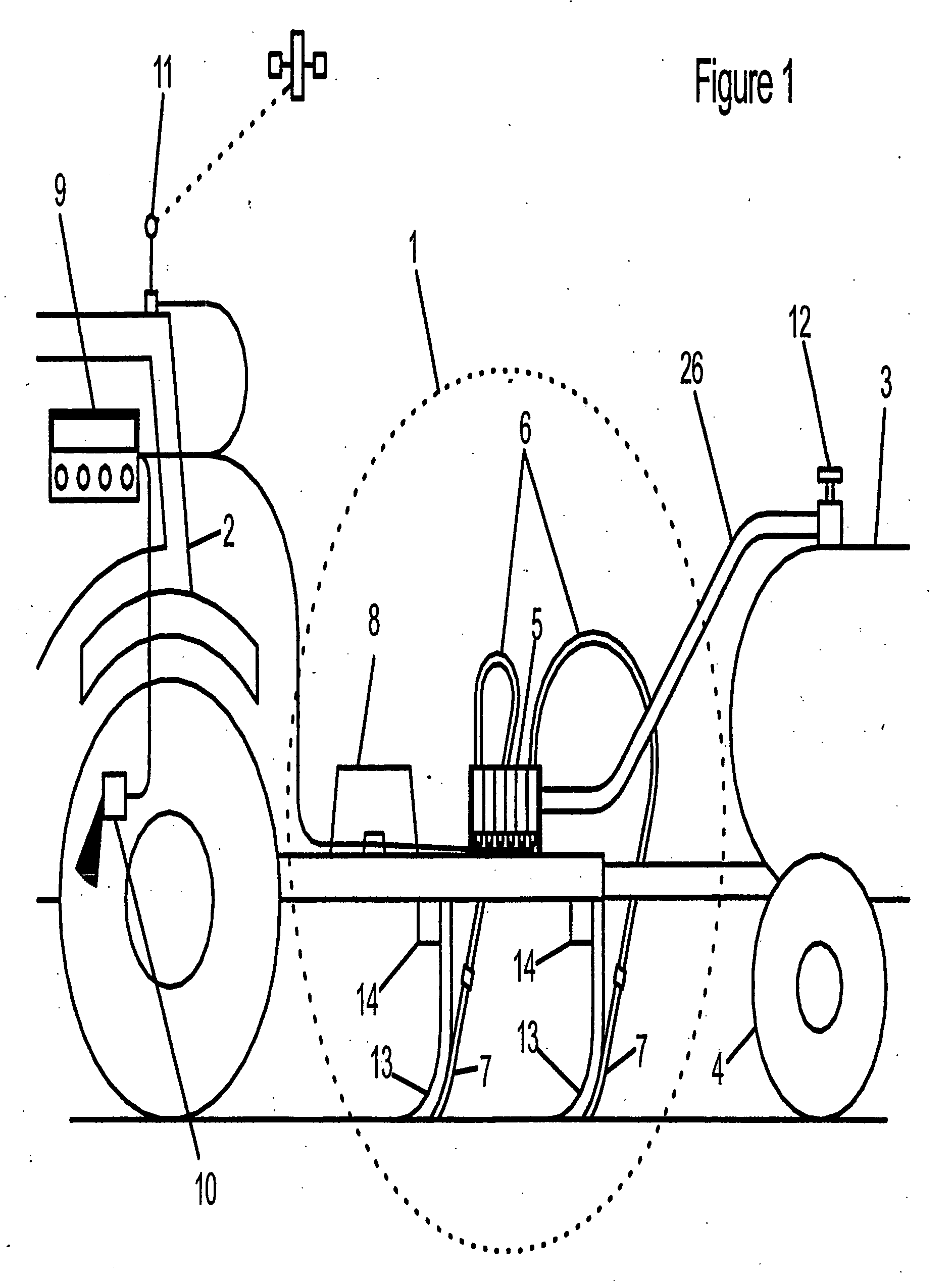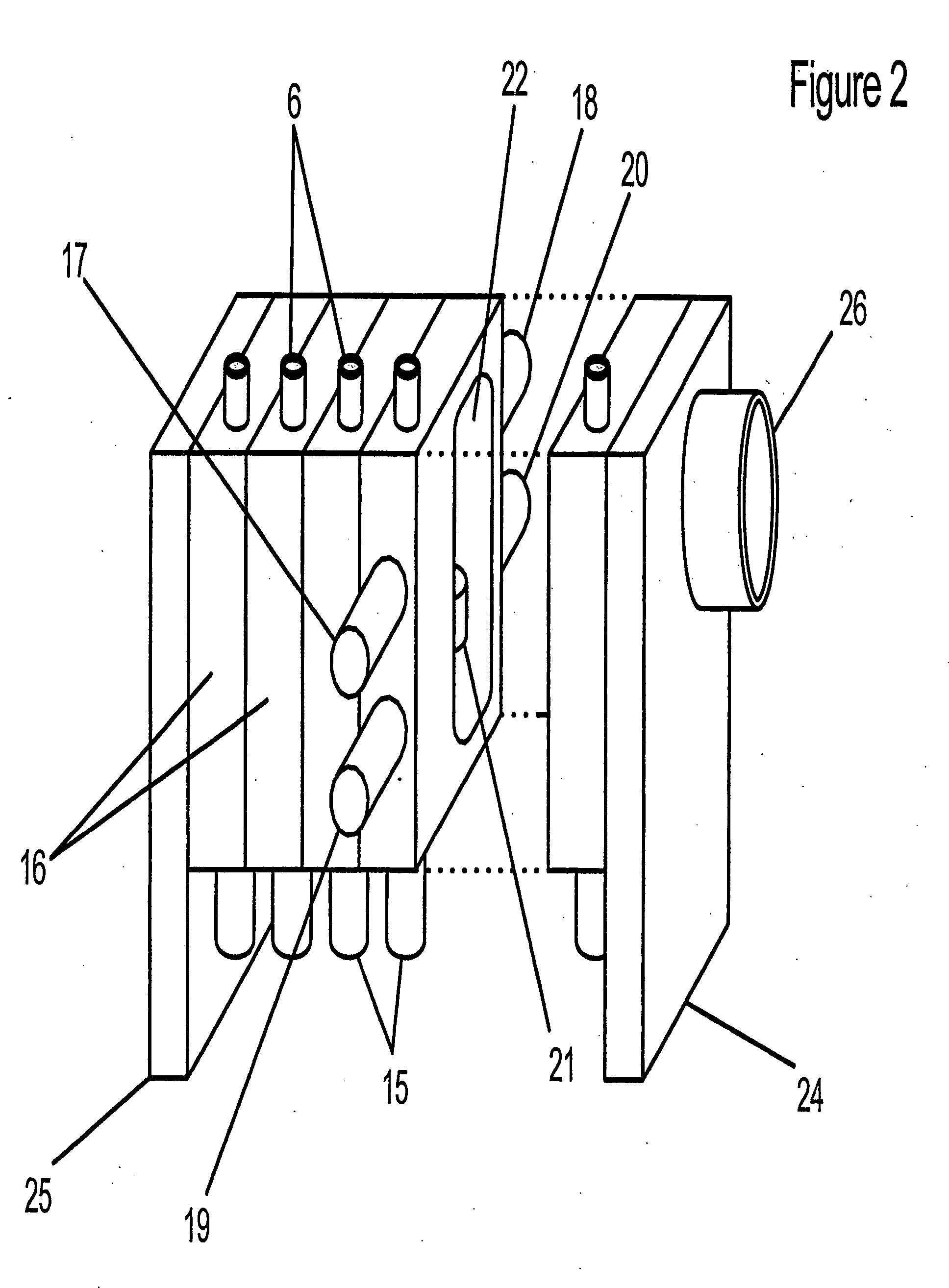System and method for dispensing a volatile liquid fertilizer
a technology of volatile liquid fertilizer and system, which is applied in the field of system and method for dispensing volatile liquid fertilizer, can solve the problems of high failure rate, difficult to accurately control and measure the flow rate of ammonia, and increase so as to reduce the pressure of fertilizer
- Summary
- Abstract
- Description
- Claims
- Application Information
AI Technical Summary
Benefits of technology
Problems solved by technology
Method used
Image
Examples
example
A liquid fertilizer distribution system as shown in FIG. 1 was manufactured and tested. The system included a multi-plate stacked valve system point and was comprised of a set of aluminum segments. Each segment included two valves so that the number of plates could be varied to produce a desired number of outlets. In this embodiment, constant pressure flow rate control devices were used to dispense liquid fertilizer into dispensing tubes.
The inlet side of the constant pressure flow rate control devices operated very close to the tank pressure and the discharge side operated at pressures less than about 400 kPa.
The constant pressure flow rate control devices had an orifice that was 2.36 mm in diameter. The diameter of the outlet increased from 2.36 mm to 6.35 mm. The outlet passage had a diameter of 12.7 mm.
Each of the constant pressure flow rate control devices included a valve plunger that was lifted by a 14 watt, 12-VDC coil. The coils were actuated by a 3 Hz CAPSTAN SHARPS...
PUM
 Login to View More
Login to View More Abstract
Description
Claims
Application Information
 Login to View More
Login to View More - R&D
- Intellectual Property
- Life Sciences
- Materials
- Tech Scout
- Unparalleled Data Quality
- Higher Quality Content
- 60% Fewer Hallucinations
Browse by: Latest US Patents, China's latest patents, Technical Efficacy Thesaurus, Application Domain, Technology Topic, Popular Technical Reports.
© 2025 PatSnap. All rights reserved.Legal|Privacy policy|Modern Slavery Act Transparency Statement|Sitemap|About US| Contact US: help@patsnap.com



